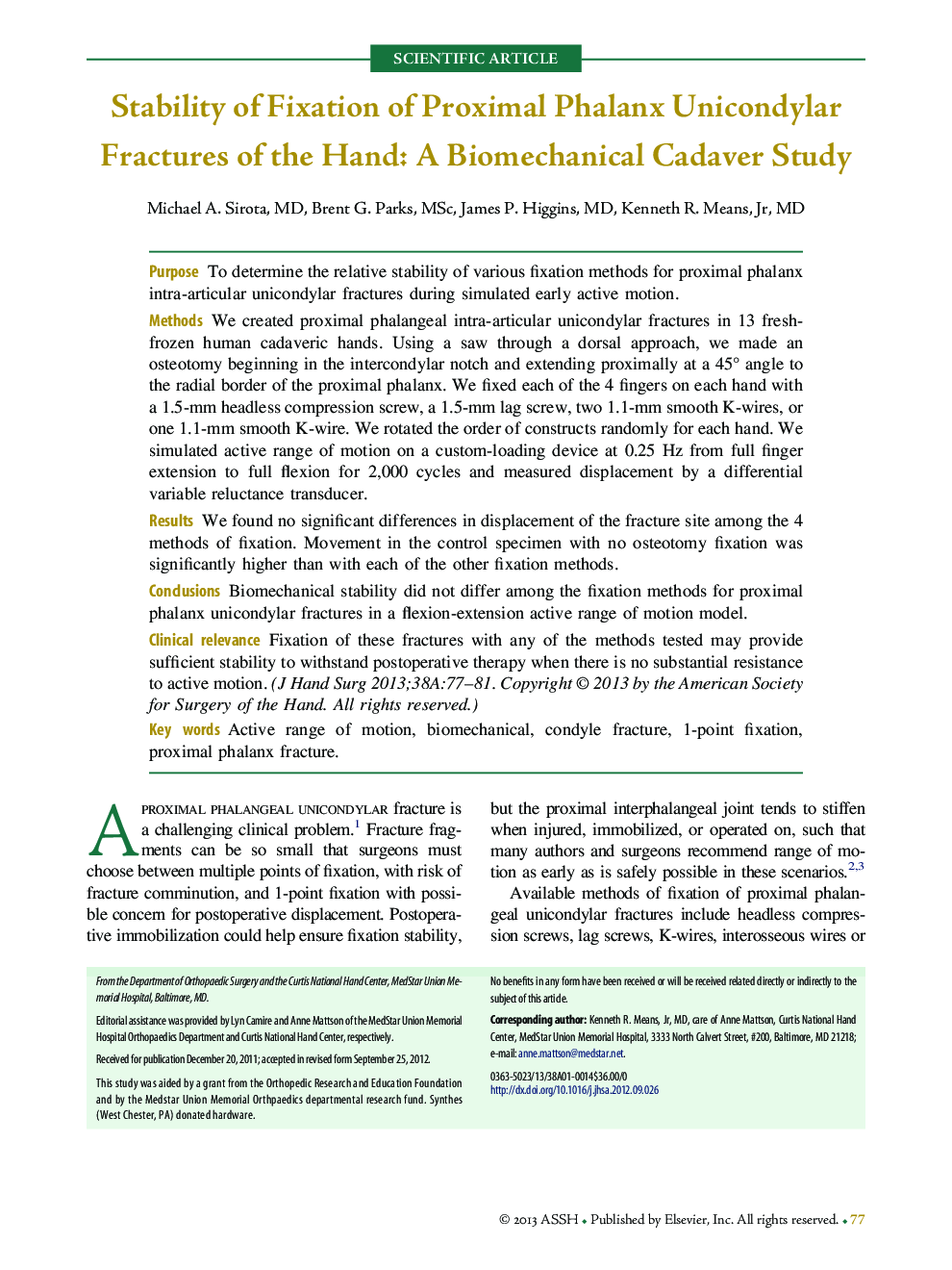| Article ID | Journal | Published Year | Pages | File Type |
|---|---|---|---|---|
| 4069676 | The Journal of Hand Surgery | 2013 | 5 Pages |
PurposeTo determine the relative stability of various fixation methods for proximal phalanx intra-articular unicondylar fractures during simulated early active motion.MethodsWe created proximal phalangeal intra-articular unicondylar fractures in 13 fresh-frozen human cadaveric hands. Using a saw through a dorsal approach, we made an osteotomy beginning in the intercondylar notch and extending proximally at a 45° angle to the radial border of the proximal phalanx. We fixed each of the 4 fingers on each hand with a 1.5-mm headless compression screw, a 1.5-mm lag screw, two 1.1-mm smooth K-wires, or one 1.1-mm smooth K-wire. We rotated the order of constructs randomly for each hand. We simulated active range of motion on a custom-loading device at 0.25 Hz from full finger extension to full flexion for 2,000 cycles and measured displacement by a differential variable reluctance transducer.ResultsWe found no significant differences in displacement of the fracture site among the 4 methods of fixation. Movement in the control specimen with no osteotomy fixation was significantly higher than with each of the other fixation methods.ConclusionsBiomechanical stability did not differ among the fixation methods for proximal phalanx unicondylar fractures in a flexion-extension active range of motion model.Clinical relevanceFixation of these fractures with any of the methods tested may provide sufficient stability to withstand postoperative therapy when there is no substantial resistance to active motion.
